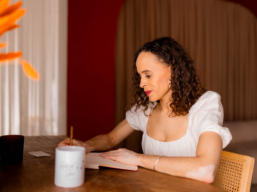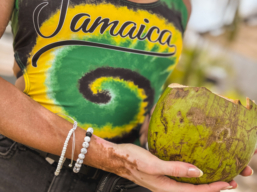
Protecting Your Skin & The Importance of Sun Safety
As we start to see signs of warmer weather in the UK, it’s a good time to pause and remind ourselves of the importance of sun safety and what better time to get the conversation going than during Sun Awareness Week which started this week and continues until the 12th May.
Launched by our friends at the British Association of Dermatology in 1989, Sun Awareness Week is an important annual campaign that highlights the importance of sun safety and protecting your skin via public awareness, educational resources and promoting sun safety practices.
There is a different theme every year with this year’s focus being on non-melanoma skin cancer. Paula Geanau, the Marketing and Communications Officer at the BAD, told us:
Sun Awareness Week is our way of kickstarting our summer-long efforts to raise awareness of skin cancer. It’s at the beginning of May to get people thinking about sun safety before summer hits. We recommend people start checking the UV Index, make sure their sunscreen has not expired since last year, and get into the mindset of being careful in the sun. Our focus this year will be on raising awareness of non-melanoma skin cancer and how to check your skin for this very common type of skin cancer.
In support of such an important week, we wanted to highlight some of the common terms you might regularly hear in relation to sun safety and what you need to know when it comes to protecting your skin.
UVA vs UVB – What’s the Difference?
UVA and UVB are types of ultraviolet radiation both dispersed by the sun but differ in how they affect to the skin.
UVA rays penetrate the skin much deeper reaching the deeper layers of the dermis which is the thick layer of skin beneath the epidermis (the top layer of the skin). UVA is the primary cause of aging skin, wrinkles and sun spots if exposed to the sun for too long without protection.
UVB rays mostly affect the outer layer of the skin (epidermis) and is the main cause of sunburn which can lead to often painful skin reddening and can contribute to the development of skin cancer over time.
Why are those with Vitiligo Sensitive to the Sun?
When it comes to vitiligo, one of our biggest concerns is protecting our skin in the sun. If you are part of any forums or actively follow conversations relating to vitiligo, you’ll often find one of the common questions asked is; how do we protect our skin in the sun and what is the best SPF to use.
The reason why we are sensitive to the sun is because we lack pigment which means there is no natural protection from the sun, ultimately this means we burn a lot quicker and easier. It’s the reason why a high SPF is highly recommended for those of us with the condition.
SPF Simplified: Your Guide to Sunscreen Strength
When it comes to applying sun screen once during the day is never enough. Reapplication is necessary to ensure we keep our skin protected throughout our time outdoors, especially during the warmer months.
SPF stands for Sun Protection Factor and indicates how well sun screen protects against UV light that causes sunburn and redness in the skin, therefore the higher the SPF the better protected you are. The numbers can range from 2 – 100, with the highest number giving the most amount of protection.
To give you some indication here is how much protection SPF gives you based on the factor:
- SPF 15 blocks 93% of UVB rays
- SPF 30 blocks 96.7% of UVB rays
- SPF 50 blocks 98% of UVB rays
- SPF 100 blocks 99% of UVB rays
It is highly recommended that those with vitiligo wear an SPF of at least 50 because the areas where there is a loss of pigment are less protected from UV light. In addition to providing protection against the rays, the SPF also tells you the amount of time it will take for your skin to redden. For example, if you apply an SPF of 50 it will take your skin 50 times longer to develop sun burn compared to someone who doesn’t wear any at all. Other factors to consider are whether a brand is dermatologically tested, whether it is water (and sweat) resistant and the star rating. For some, wearing a fragrance free product that easily absorbs into the skin and is suitable for sensitive skin is also a factor to be considered.
You will often see on the packaging a round circle with the letters ‘UVA’ which indicates that the product conforms to EU regulations for UVA protection. In addition, you will also see a star rating between 1 and 5 with a minimum rating of 4 being highly recommended. It is also advised that you use a separate sunscreen for your body and face. This is often due to the ingredients used, for example if you have sensitive skin or acne prone skin, a more sensitive sunscreen designed for the face is less likely to cause a reaction.
Dispelling Sunscreen Myths: What You Need to Know for Effective Protection
People of Colour don’t need to Wear Sunscreen
People with darker skin are better protected by the sun due to naturally occurring biological agents in the skin which absorb a proportion of UVR, with melanin being one of these (British Association of Dermatologists), however, this does not mean people of colour do not need to wear sun screen. There is still a risk of getting burnt and premature aging, it may just take a bit longer, therefore sunscreen is still highly recommended to use.
Beauty Products with an SPF is enough to Protect the Skin
Whilst beauty products such as foundations can offer a layer of protection against the sun, relying solely on the SPF in such products doesn’t offer adequate protection. A good quality sun screen is approved by the relevant regulations and is given an SPF factor with focus on protecting us against both UVA and UVB rays, therefore using a sunscreen in addition to makeup products is necessary.
Sunscreen is only Needed During the Summer Months
UV rays are present all year round and can break through the clouds (and even glass which is why it’s recommended that you wear a sunscreen when driving!) so whilst the sun might not feel present during the winter months, the UV rays are still very active. Therefore, making sun screen part of your daily routine is still important.
Top Tips for Protecting your Skin
- According to beauty brand Nivea who speak frequently on sun safety, the sun is at its strongest between the hours of 11am and 3pm therefore it is advised to avoid the sun during this period. If you are naturally outdoors during this time, remember to reapply sun screen frequently and try to seek shade where possible.
- If you love to swim or partake in water sports then using a water-resistant sun screen is the best option, if not, reapply sun screen before and after swimming.
- In addition to sunscreen, wearing protective and loose clothing gives additional protection. Wearing a hat to protect your scalp, sun glasses to protect your eyes and wearing materials such as linen and close weave fabrics will help you to keep cool.
- REMEMBER to practice sun safety all year round. The rays are still very present during the colder months, even though you can’t necessarily feel the sun. The rays can break through the clouds so wearing a lighter SPF is advisable.
Remember, sun protection isn’t just about preventing sunburn and other types of skin damage, it’s about safeguarding your skin’s health for a lifetime of sunny adventures.
Please support our work! You've enjoyed 1 article this month and we hope you have found it useful. Our work is entirely funded by memberships and donations, so please consider joining our charity today and supporting our work.
Already a member? Log in





